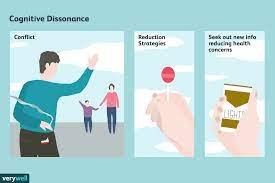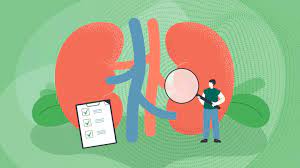Cognitive dissonance is a psychological phenomenon that occurs when individuals experience discomfort due to holding contradictory beliefs, attitudes, or behaviors. Coined by psychologist Leon Festinger in 1957, this concept has been widely studied and has significant implications for understanding human behavior and decision-making.
The Basics of Cognitive Dissonance
Defining Cognitive Dissonance (H1)
Cognitive dissonance refers to the mental discomfort that arises when a person holds conflicting thoughts or beliefs. This dissonance creates psychological tension, motivating individuals to resolve the inconsistency and regain a sense of equilibrium.
Festinger’s Theory (H2)
Leon Festinger’s theory states that when individuals experience cognitive dissonance, they are motivated to reduce it through various strategies. One common strategy is to change one’s beliefs to align with their actions, reducing the inconsistency.
Cognitive Dissonance in Everyday Life
Consumer Behavior (H2)
Cognitive dissonance plays a crucial role in consumer decision-making. When a person purchases a product or service, they might experience dissonance if they encounter information that contradicts their choice. Marketers often employ strategies to minimize this dissonance, such as emphasizing positive aspects of the chosen product.
Relationship to Justification (H2)
Cognitive dissonance can lead to post-purchase rationalization, where individuals justify their choices despite doubts. For instance, a person who bought an expensive gadget might downplay its flaws to align with their decision.
Cognitive Dissonance in Decision Making
Decision Avoidance (H2)
Cognitive dissonance can lead to decision avoidance, where individuals refrain from making choices to prevent potential conflicts in beliefs. This avoidance helps maintain a sense of internal consistency.
Sunk Cost Fallacy (H2)
The sunk cost fallacy is a classic example of cognitive dissonance in decision-making. People tend to continue investing in a venture even if it’s failing, as they have already invested resources, despite conflicting evidence.
Managing Cognitive Dissonance
Changing Beliefs (H2)
To alleviate cognitive dissonance, individuals might genuinely change their beliefs. This adaptation allows them to maintain inner harmony by aligning thoughts and actions.
Seeking Information (H2)
People often seek information that confirms their existing beliefs to reduce dissonance. This behavior, known as confirmation bias, can lead to a reinforced echo chamber of ideas.
Cognitive Dissonance and Personal Growth
Embracing Dissonance (H2)
Cognitive dissonance can be a catalyst for personal growth. Embracing discomfort from conflicting beliefs can lead to introspection, learning, and evolving perspectives.
Overcoming Bias (H2)
Confronting cognitive dissonance challenges inherent biases. By acknowledging and addressing conflicting thoughts, individuals can work toward a more open-minded and well-rounded worldview.
Conclusion
In conclusion, cognitive dissonance is a complex psychological phenomenon that impacts decision-making, behavior, and personal growth. By understanding its mechanisms and effects, individuals can navigate their thoughts and actions more consciously. Embracing dissonance can lead to transformative growth, encouraging a deeper understanding of oneself and the world.








